The 50 most important games of all time
This is how the video game industry got to where it is today
21. World of Warcraft (2004)
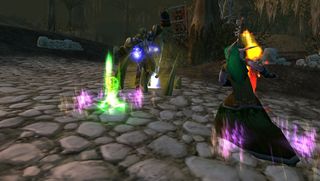
MMO veterans will recount tales of epic raids in EverQuest or the dangerous frontiers of Ultima Online, but only one game in the genre can boast a subscription base that, at its peak, surpassed 10 million players: World of Warcraft. Of course, WoW wasn't the first MMO, and yes, it clearly drew a lot of influence from the games that preceded it - but it's the MMO responsible for putting the mainstream spotlight on the genre.
It certainly wasn't without its problems (anyone from the pre-launch beta days will tell you WoW was a mess back then), but WoW made playing MMOs more acceptable than it had ever been. Players signed up by the millions to adventure with others in Azeroth, spawning countless famous figures (Leeeeeeeroy Jenkiiiiiiins), memes (more DoTs!), and player-made add-ons, the best of which often became full features built into the game itself. Never before had an MMO been more accessible--or more successful.
20. Angry Birds (2009)

Some gamers might not want to admit it, but Angry Birds does deserve a spot as one of the most important games of all time. Flinging the colorful team of birds at the evil green pigs, hunkered down in their makeshift castles, has become a cultural phenomenon. It's hard to even walk into a store without seeing a barrage of Angry Birds merchandise in the form of hats and t-shirts.
But the game's popularity isn't what makes it important - it's the fact that Angry Birds launched the current mobile gaming explosion of the last few years. How? It was downloaded over 12 million times when it released in December 2009, that's how. Mobile gaming became a viable platform where developers could earn the big bucks, giving birth to the stream of games that are now killing the time during commutes, poops, and boring conversations.
19. GoldenEye 007 (1997)

PC gamers had been scoring headshots and blasting each other over LAN wires for years, but first-person shooting hadnt yet caught on for consoles, despite ports of Doom and other hits. Many rejected the idea of playing without a mouse and keyboard - so developer Rare took the relatively simple idea of a shooter based on a James Bond film and found a way to make FPS gameplay just as undeniably addictive on a TV as it was on computers.
GoldenEye had all the deathmatches and king of the hill modes that were popularized in PC shooters, but they were rebalanced to work with the N64s analogue stick and Z-trigger shooting. It may look ugly and sluggish today, but the four-player title enthralled a huge new audience that couldnt put down the split-screen action. GoldenEye proved that console gamers were ready for FPS titles, which would eventually grow into billion-dollar franchises that rule gaming sales charts today.
18. Mortal Kombat (1992)
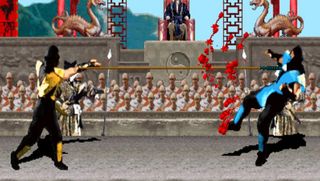
While violence certainly existed in video games prior to 1992, Mortal Kombat was the game that put it in the spotlight, inciting the rash of court cases and controversy that ultimately led to the formation of the Entertainment Software Rating Board. Never before had games featured the level of gore and brutality present in Mortal Kombat; specifically, its Fatality finishing moves were so shockingly violent that they resulted in widespread consumer panic and eventual Congressional hearings.
Sign up to the GamesRadar+ Newsletter
Weekly digests, tales from the communities you love, and more
The ESRB spawned from said hearings is the basis by which a game's content is assessed, allowing parents and gamers to make informed purchasing decisions. And, though the effects of video game violence remains a hot topic to this day, it all began with those two magical words: "Finish him!"
17. Super Mario 64 (1996)
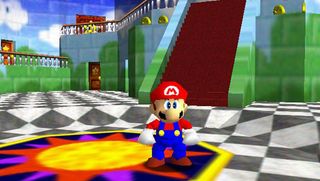
Mario set the standard for platformers with Super Mario Bros., but success in the past isn't always a guarantee of continued triumph; history is full of examples of characters failing to adapt with the times. Super Mario 64 could have proven disastrous for the pudgy plumber if the dimensional jump wasn't perfect, but he stuck the landing. In the end, Super Mario 64 did for 3D platformers - and 3D gaming in general - what the original did for games in general back in 1985.
Mario's 3D adventures served as a proof of concept for 3D worlds. It showed how navigation and the camera should work, and, more importantly, it demonstrated the full benefits of gaming in the third dimension. While the PlayStation was wholly capable of rendering 3D, few games attempted anything as dramatic for the first two years of the console's life. After Mario 64, though, the floodgates were opened, and game developers finally embraced 3D after seeing exactly what it was capable of.
16. Space Invaders (1978)

Space Invaders saved gaming (for the first time). It also brought video games into the mainstream like no other game before it, and set the wheels in motion for two of the industry's most important figures to step into the fray a little later down the line.
The first arcade game to truly explode out of dingy bars and into locations such as restaurants and shopping centers, Invaders single-handedly reinvigorated the public interest in gaming after the first video games crash of 1977 (brought about by the over-saturation of identikit Pong clones). It also inspired a previously disinterested young chap called Shigeru Miyamoto to start paying attention to games, and had a similar effect on a guy called Hideo Kojima. So yeah - it was a big deal.
15. Quake (1996)
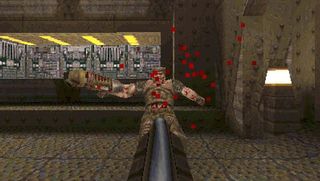
Doom may have led the sprint when Wolfenstein 3D fired the starting pistol for the FPS genre, but it was Quake that set the pace for the rest of the pack, dictating the tone and rules for near enough everything that followed. It was technologically revolutionary, featuring full 3D environments and enemies, the latter of which could now be gibbed, resulting in flying chunks of meat that actually hit the walls. The controls, too, were incredibly versatile, introducing staples such as the rocket jump and strafe-jumping, which opened up new possibilities for speedrunning enthusiasts.
But most importantly, it also took Dooms Deathmatch phenomenon and ran with it, working within the confines of the mid-1990s limited online technology to provide fast, responsive, and utterly brilliant multiplayer gaming that spawned a slew of pretenders to its crown. Look at the games industry now, and you can still see the ripples from the splash Quake made. The reason Call of Duty is the biggest game on the planet is because of Quake and the core gameplay mechanics it represents.
14. Donkey Kong (1981)

Old arcade games like Donkey Kong seem so archaic now that its hard to think of a time when they would be considered advanced--but DK certainly was. The market was dominated by space shooters such as Space Invaders, with the simple goal of killing everything on screen. Comparatively, Donkey Kong used its colorful graphics to tell a story with a beginning, middle, and close: Ape kidnaps girl, man fights ape, man frees girl. That plot was far deeper than what players were getting at the time, so they were quickly hooked by this strange-yet-relatable narrative--one that pushed gaming storytelling further than many people give it credit for.
The gameplay was pretty novel as well, relying mainly on Marios jumping prowess. Instead of blasting everything with a laser, players had to focus on precision and timing to beat Donkey Kong, carefully hopping from one platform to another. That little hop would go on to become the dominant gameplay type for years to come, and it all started with Mario jumping over barrels. In addition, this game solidified Nintendos place as a top tier game maker, a position it still maintains today.
13. Street Fighter II (1991)

Fighting games have a long and storied history, but no game among them is more essential to the genre than Street Fighter II. Capcoms one-on-one 2D fighter set the standards that would be aped for years to come, building a rock-solid foundation for a genre that had previously stood on shaky ground. With an unforgettable cast, incredible accessibility, and an ocean of depth awaiting dedicated players, it enchanted gamers in arcades and homes alike with its near-infinite replayability--something that persists over 20 years later.
Street Fighter IIs success also planted the seed for one of the most passionate communities in all of gaming--a diverse array players who strive for good sportsmanship and shared knowledge. Its a game that managed to turn Shoryuken into a household word, and its characters are some of the most iconic in the entire medium of video games.
12. Pac-Man (1980)
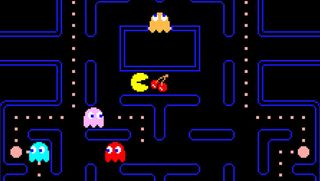
There were games before Pac-Man, but do you know what they didn't have? A song dedicated to them that hit #8 on Billboard's Top 100. Pac-Man reached an unprecedented level of popularity in arcades, shooting it from "game that people were lining up around the building to play" to "game that was a true pop culture phenomenon."
Pac-Man was a massive hit--likely bigger than you realize. In its first year, the game made $1 billion in quarters, outpacing even Star Wars in terms of the most popular media product, and proving that games were, indeed, capable of turning an incredible profit.

Sam Loveridge is the Global Editor-in-Chief of GamesRadar, and joined the team in August 2017. Sam came to GamesRadar after working at TrustedReviews, Digital Spy, and Fandom, following the completion of an MA in Journalism. In her time, she's also had appearances on The Guardian, BBC, and more. Her experience has seen her cover console and PC games, along with gaming hardware, for a decade, and for GamesRadar, she's in charge of the site's overall direction, managing the team, and making sure it's the best it can be. Her gaming passions lie with weird simulation games, big open-world RPGs, and beautifully crafted indies. She plays across all platforms, and specializes in titles like Pokemon, Assassin's Creed, The Sims, and more. Basically, she loves all games that aren't sports or fighting titles! In her spare time, Sam likes to live like Stardew Valley by cooking and baking, growing vegetables, and enjoying life in the countryside.
Most Popular


